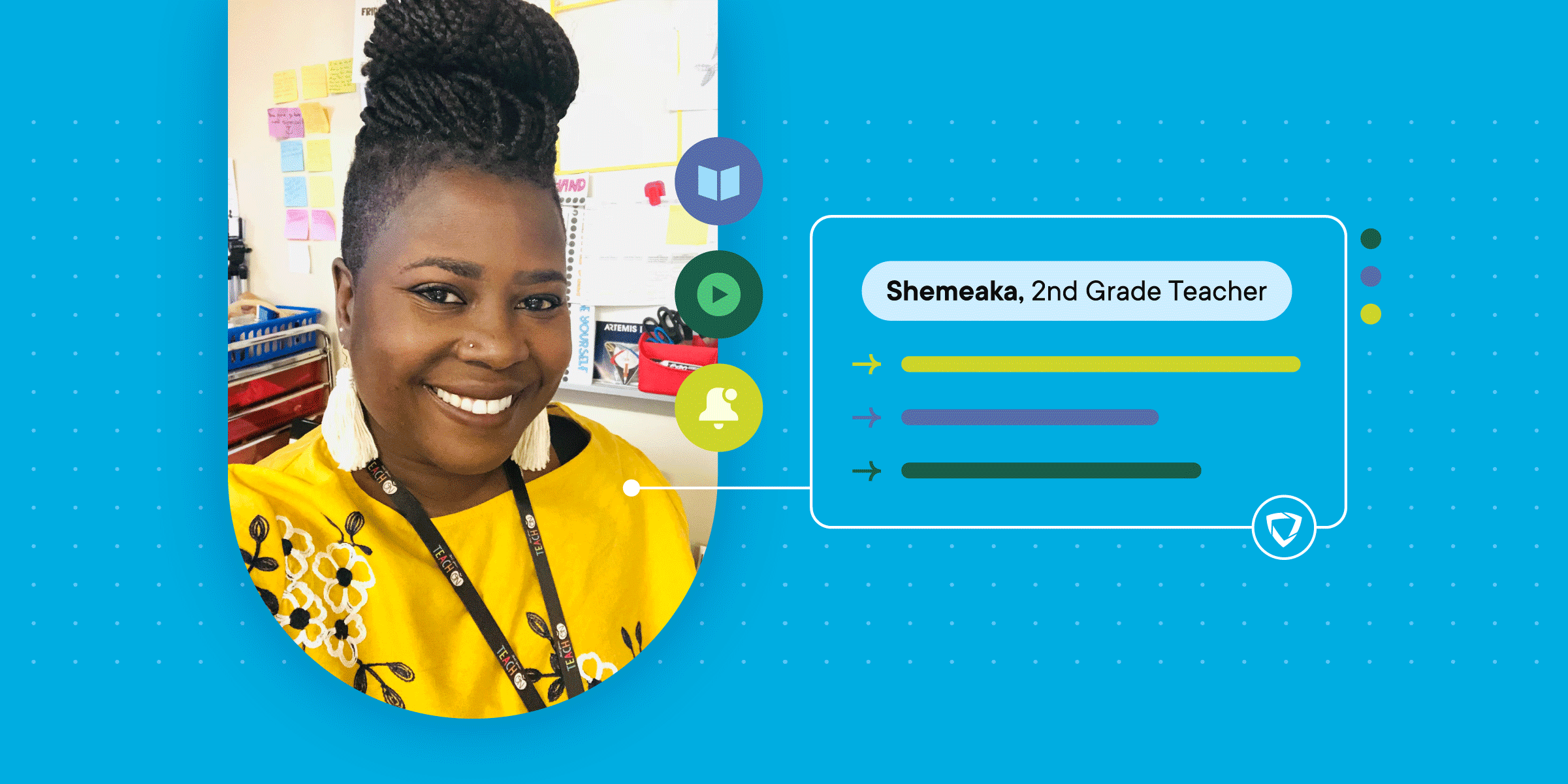
This post was written by guest author Michael E. Creekmore, Jr. LPC
Michael is currently a Professional School Counselor for 4th and 5th grades, and has been a Licensed Professional Counselor for 16 years.
We've all been through a lot this past year and a half. Students were sent home, then acclimated to virtual learning. When students were welcomed back, the conditions mirrored the set of a sci-fi movie. As most of us prepare to return to in-person learning this fall, some of us are excited, some are nervous, and others are anxious about the whole ordeal.
Everyone is entitled to their feelings.
After a summer that may have felt more like a collective exhale than exhilarating excitement, the school doors are all the way open. The intimidating truth: Regardless of your level of readiness, back-to-school time is upon us. The good news: There are things we can do to address all the feelings associated with re-entering the school building.
The process of re-entering our school buildings will present challenges for parents, educators, and especially students. I liken the entire process to trauma recovery. When we are trying to recover from trauma, you may hear someone say, "Just breathe; take it one moment at a time. Don’t try to do too much all at once because it can overwhelm you.” People will encourage you to “be calm and relax.”
It’s almost like those two things — being calm and relaxed — will enhance your ability to recover. As a counselor, I agree that both are almost always necessary, but they can be hard to achieve in unfamiliar situations and circumstances. However, with every great trauma comes the potential for recovery. Sometimes the recovery process is harder than experiencing the actual trauma; fortunately, we have some things we can do to navigate our recovery. Similarly, there are things we can do to navigate our collective recovery as we return to in-person school.
For many students, the 2021-2022 school year will be the first time they’ve been in their respective school buildings since March 2020. Getting acclimated to a school building can be challenging, depending upon a child's age. For example, 2020-21 kindergarteners that were virtual will be entering the school, as 1st graders, for the first time ever. This means the two youngest grade levels in the building (last year and this year's kindergarteners) will be brand new to the building. The same is true for middle school (6th and 7th grade) and high school (9th and 10th grade) students. The school building will be new for many students, routines will be new, anxieties may be high, and emotions about what they’ve experienced and are experiencing will be plentiful.
With so many variables at play, I want to take some time to discuss what educators and parents can do to help students get back into the school building and school routine.
What can parents do?
Facilitate dialogue.
As the first day of school draws near, have conversations about what they can expect when they return. Discuss the emails you’ve received from the school regarding COVID-19 guidelines. This automatically helps students feel in the loop about what’s going on. Take trips down memory lane with conversations about what school was like before COVID-19. Ask questions to see if they remember typical classroom expectations. For example: If your child has been away from traditional school for the past year, the memory of raising their hand before talking or asking for permission to leave their seat may be forgotten.
Collaborate with your child to establish a weekly school routine.
If your child is entering a school for the first time this fall, it’s the perfect time to create a new routine. If your child was school age prior to the pandemic, their regular school routine was completely upended and needs to be re-established. In both cases, your child will be more likely to follow a routine they’ve helped create. Set boundaries, but give them choices. When the discussion of bedtime/wake-up time comes up, provide options. This presents an opportunity to discuss how choices lead to outcomes, positive and negative; for example, late bedtimes result in late wake-up times.
Hold space for expression of emotion.
Allow your child to feel their feelings. Regardless of your child’s age and/or grade level, emotions need to be expressed. As parents, we can encourage our children to talk their feelings out, or we can do nothing, which typically leads to them acting their feelings out. If you’re like me, you’d rather talk through the feelings than try to process behaviors. If your child isn’t ready to talk about them or does not want to talk, simply sit with them. Sometimes, they don’t have the words to explain their feelings, and they just need to feel supported through physical closeness.
Introduce the growth mindset.
Help your child understand the connection between a growth mindset and overcoming difficult situations. Model overcoming adverse, anxiety-provoking situations. Talk to your children about difficult situations you are overcoming or have overcome. Your success stories can have a significant impact on your own children. Imagine what seeing a success story in progress would do for a child struggling to overcome their own difficult situation.
What can teachers do?
Utilize AM/PM check-ins.
When students come into your school building, they are bringing not only themselves but also their experiences. AM/PM check-ins are a great way to give students an opportunity to express their emotions, and they allow teachers to stay abreast of students’ thoughts and feelings. Here’s a quick guide to student check-ins:
Be intentional.
Create a form that asks a maximum of five questions. For example:
- What emotion are you feeling today?
- What is causing that emotion?
- Are there any challenges you anticipate facing today?
- What can teachers/staff do to help you have a good day?
Start with a morning greeting.
Have student check-in forms on students’ desks or utilize Pear Deck to ask the questions. Give students approximately five minutes to complete this form, and take time during your day to read the completed forms and do any essential follow-up.
Never underestimate the power of check-ins. You will discover the most information during this time.
Provide reassurance.
As an educator, you know what your school is doing to keep your students safe. Communicate this to your students. Of course, you cannot guarantee health and safety, but you can guarantee that you (in conjunction with your colleagues) will do everything in your power to ensure safety and keep students updated on the latest changes and school information regarding presenting issues.
Consistently model, teach, and promote the growth mindset.
Similar to parents teaching and demonstrating the growth mindset, educators can teach and demonstrate this skill to students for positive impact. The consistency is what offers normalization and familiarity of this skill.
Teach and practice mindfulness exercises.
As a class, take time to engage in deep breathing exercises or mindful moments. This not only normalizes use, but also gives students an effective tool to use when stressed and/or anxious.
Consult.
Consult with your school counselor to learn about any underlying issues and strategies to aid in reducing problematic behaviors and/or emotional concerns, whether about individual students or the class as a whole. Inquire about any suggested strategies that may be used in the classroom.
The past 18 months have had an inordinate amount of changes. As you work to support students through these changes, give yourself permission to take the time you need to adjust to the changes in your life as well.
Even though we are on the path of recovery and re-entering our school buildings, we don’t know where this path may take us or how rough the path may be. Thankfully, having a few tools in our tool belt will help.
To help students develop tools for managing stress, we’ve collaborated with Michael to create a set of Pear Deck templates.
Be sure to also check out Michael’s Pear Deck Templates for Building a Student Self-Care Recipe and Pear Deck Templates for School Counseling: Understanding Feelings.









